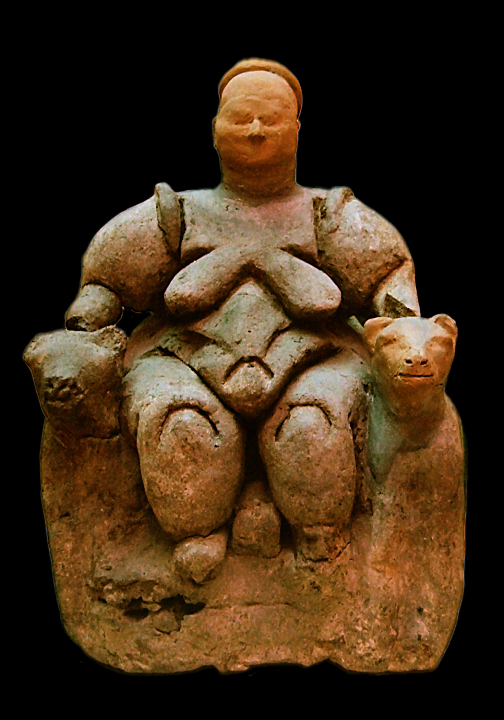 |
| Seated Woman of Çatalhöyük c. 6,000 BCE |
The image at left is a good example of how these concepts persist. It is thought to be an ancient Earth Mother goddess that later morphed into the Roman Goddess Cybele. This figure sits at the center of a persistent web of ideas that pervade cultures and span thousands of years of history.
The seated figure is possibly a synthesis of a handful of celestial and seasonal metaphors. The Woman with the Lion(s) is probably a representation of the constellations Virgo and Leo. Leo precedes Virgo, hence Cybele is depicted in a chariot drawn by lions.
When you meditate on these images and their associated stories, cults and rituals, eventually logic emerges from the poetry. In the spring, the feminine aspect of the Earth is most obvious, especially in an agrarian context--a seed is planted in her moist furrow, as it's penetrated by the Sun, it spawns new life. The constellations Virgo and Leo dominate the springtime night sky. Then mark the height of summer and the harvest season, respectively, when the Sun rises in them.
The cycle of the seasons is mirrored (of course caused by) the cycle of the Sun's journey through the sky north and south through the year. In this case, the Earth mother gives birth to the Sun at the Winter Solstice, then laments his death in the Summer.
The seated figure is possibly a synthesis of a handful of celestial and seasonal metaphors. The Woman with the Lion(s) is probably a representation of the constellations Virgo and Leo. Leo precedes Virgo, hence Cybele is depicted in a chariot drawn by lions.
When you meditate on these images and their associated stories, cults and rituals, eventually logic emerges from the poetry. In the spring, the feminine aspect of the Earth is most obvious, especially in an agrarian context--a seed is planted in her moist furrow, as it's penetrated by the Sun, it spawns new life. The constellations Virgo and Leo dominate the springtime night sky. Then mark the height of summer and the harvest season, respectively, when the Sun rises in them.
The cycle of the seasons is mirrored (of course caused by) the cycle of the Sun's journey through the sky north and south through the year. In this case, the Earth mother gives birth to the Sun at the Winter Solstice, then laments his death in the Summer.
No comments:
Post a Comment